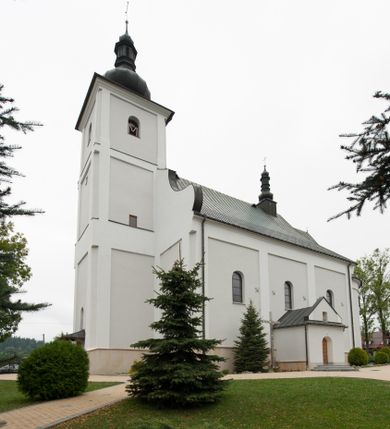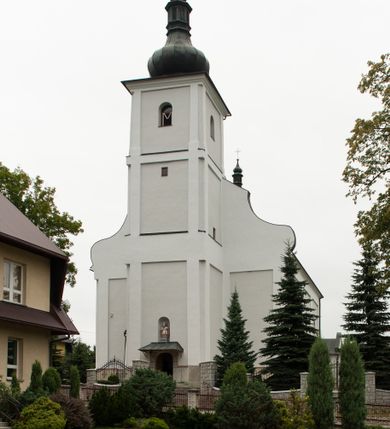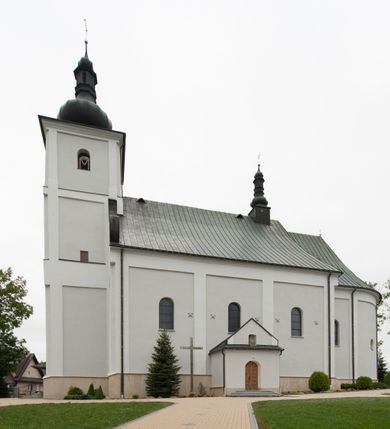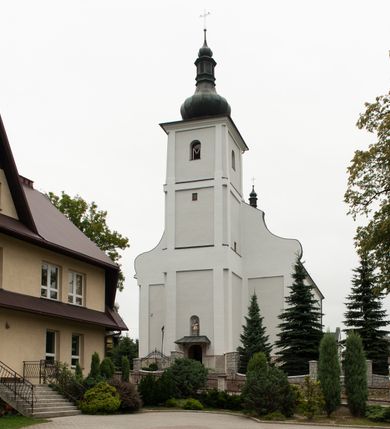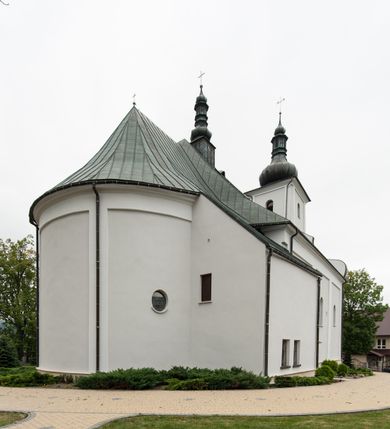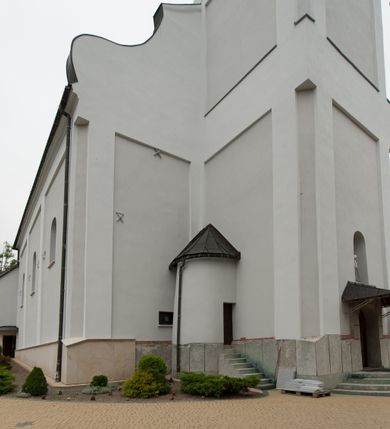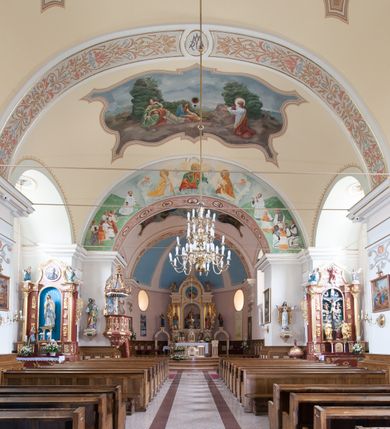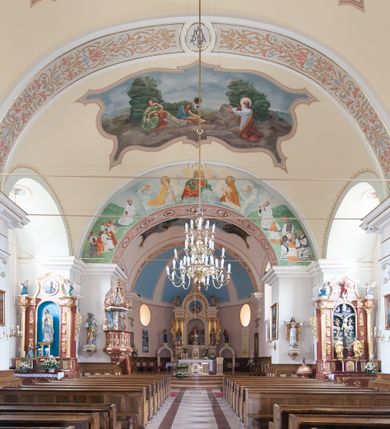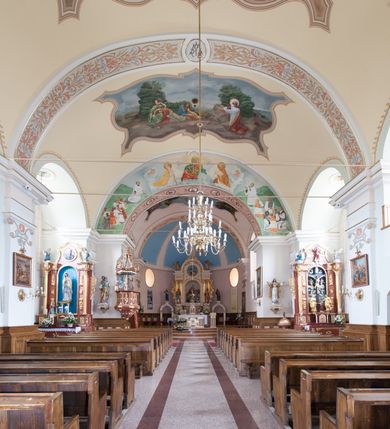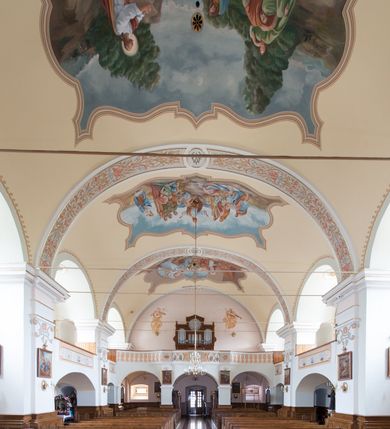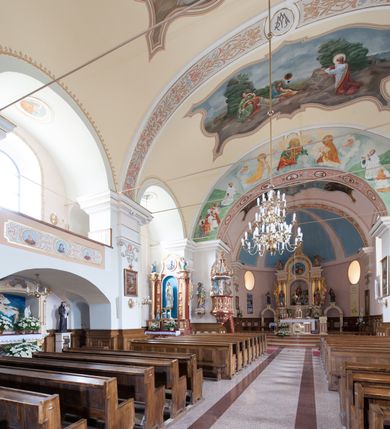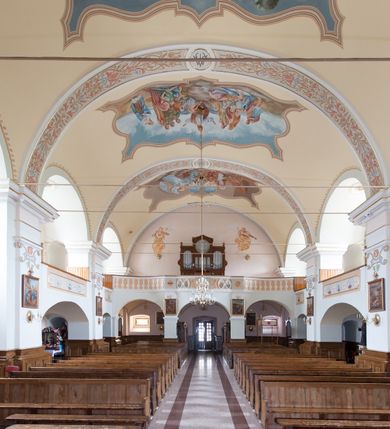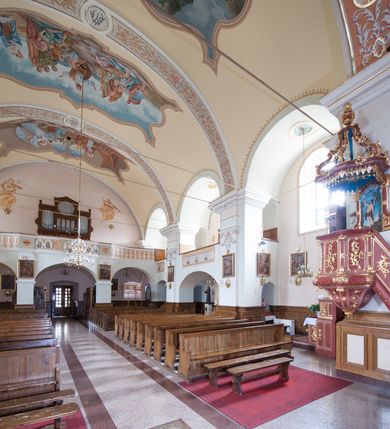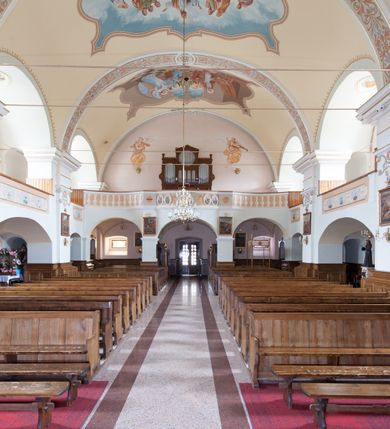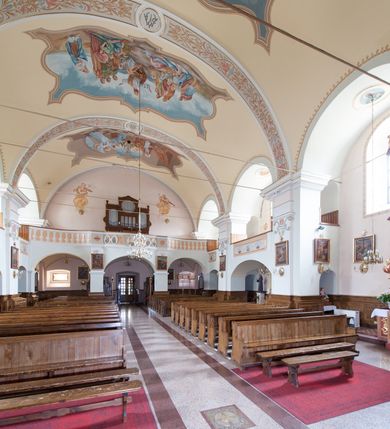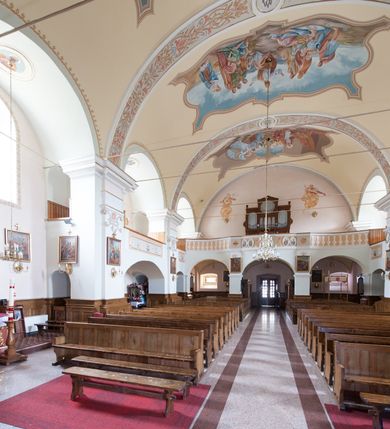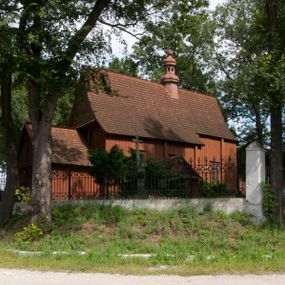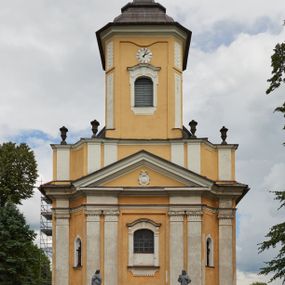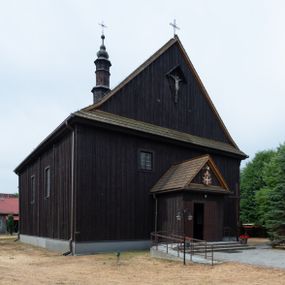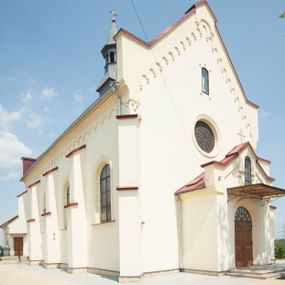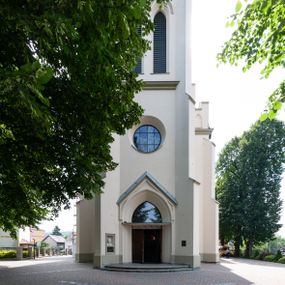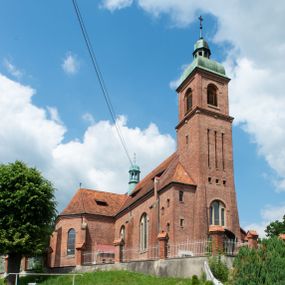
St. Martin's Church in Podwilk
Identifier
DZIELO/13827
Amount
1
Catalogue note author
Maria Działo
History of work
The first church in Podwilk was probably built in 1659 by Feliks Wilczek. It was a wooden temple with an altar with paintings of St. Martin and St. Paul the Apostle. In 1618 Erzsébet Czobor, the widow of György Thurzó, and her son Imre Thurzó, insidiously passed the role of the deceased Błażej Lenkwara along to Lutheran parish church. Protestant superintendent Jan Hodik, who visited Orawa in 1626, noted that the region's inhabitants made pilgrimages to Kalwaria Zebrzydowska and were married by Catholic priests. Because of the Catholicism, which was still prevailing in this area, the functioning of the Lutheran parish church in Podwilk slowly ceased to exist, eventually becoming a subsidiary of the parish in Jabłonka. However, the persecution of Catholics not only continued, but also increased. Due to the actions of Mateusz Klinowski's gang in Rabczyce and the repressions from Protestants, a church and royal committee was set up to interrogate both Catholics and Lutherans. On August 2, 1659 the commission wrote down the testimony in Bukowina-Podszkle. Village leader Stanisław Wilczek testified that the settlement is inhabited by 779 Catholics and 12 Lutherans, while Catholics bear the costs of repairing the presbytery and the church, and the Lutheran pastor does not allow them to hold Catholic services there. The testimonies of subsequent village leaders confirmed the testimony of Stanisław Wilczek. After the commission left, village leaders met with cruel revenge. They were kidnapped to the Orava Castle, where they were tied up, beaten and starved. It was one of the last acts of helpless aggression. In 1660, the Orava parish priest Wojciech Zagórski occupied the church in Podwilk as a result of a daring action carried out by the village leader Stanisław Wilczek with the help of Catholics from Sidzina and Spytkowice. From that year until 1687 the church in Podwilk became a subsidiary of the parish in Orawka. However, the fighting continued. In the years 1672-1685 an uprising was triggered by Emeric Thokoly, who, in order to conquer Orava, commissioned trusted Kasper Pika to start the uprising. Again the village leaders Stanisław and Mikołaj Wilczek from Podwilk, Jan Wilczek and Jan Bukowiński from Bukowina-Podszkle and Mateusz Moniak from Zubrzyca Górna stood up for their region together with a unit of 700 light-armed soldiers. The uprising was suppressed and Kasper Pika was staked to the ground. Also, 24 village leaders favouring him were killed. The winners, noting that the peace is not stable and the monarchy's defense may be the only guarantee, asked Leopold I to reward them for their merits in the suppression of the rebellion and to ennoble them. On June 27, 1673, the emperor exempted the village leaders from all rents, levies and contributions and prohibited the civil servants and castle officials from bothering them, provided that the Catholic faith was maintained. The village leaders received the Wilczek family coat of arms, named after their instigator Stanisław Wilczek. The coat of arms shows a wolf facing to the right, raising a sabre in his right paw and a cross in his left paw, which refers to the defense of the Catholic faith by the village leaders. The Wilczek family coat of arms became a symbol of the lofty past of Podwilk, because of the values it referred to. However, the Orava region was still troubled by fighting, which was stopped by the Polish king John III Sobieski. In 1684 the Lutheran parish church in Jabłonka was closed down. The fanatical pastor Jan Zahora, who repeatedly oppressed Catholics, was shot dead by a representative of an ennobled family, Daniel Wilczek, in 1687. In 1672, father Adam Wilczek, a relative of Daniel's, erected a stone statue of the Transfiguration of Jesus in the place where fatal shots were fired.
On October 18, 1687, an independent parish was founded in Podwilk. As a thanksgiving for regaining the temple and creating a parish, Wojciech Wilczek funded a reproduction of the painting of Madonna of Częstochowa, and placed his and his wife's image in the lower part of it. Unfortunately, the painting was lost during World War II. It is on the list of lost works of art of the Ministry of Culture and National Heritage of the Republic of Poland. The wooden temple also has not survived to the present day. When the parish priest was Michał Bergam (1761-1776), a new, stone church was built in Podwilk. Construction began in 1761. The temple was built in the Joseph II style. For some time, probably the former temple's accessories were used. The exact date of the construction of new altars is unknown. Nevertheless, they surely existed in 19th century, as there is a note of these altars in the visitation report from 1920. High Altar, Crucifixion Altar and Altar of Saint John of Nepomuk (probably the present altar of Our Lady of Lourdes) were mentioned in these documents. At the end of 20th century a number of renovation works were carried out in the temple. In 1996 a new radio broadcasting and electrical installation were made, and a year later the ceiling was insulated. In the following year the foundations were trussed and water was brought to the sacristy. At the end of the 20th century renovation works of the interior of the temple began. The chancel was reconstructed by raising the height of the altar and removing the mouldy plaster. As a result of the works it turned out that more than half of the plasterwork in the church needs to be removed. A new polychrome was made then, and the old one was renovated. Then a new marble floor was laid. In the years 1999-2002, all the altars and the pulpit were renovated. After the works inside the temple were completed, the redevelopment of the church square began: a processional road was paved with stone blocks, new foundations for stairs and new elevation of the temple were made, and a stone fence with metal spans was built. The church stairs were covered with granite slabs and the sacristy was fitted with new furniture and equipment.
Abstract
St. Martin's Church in Podwilk was built in 1761-1776, when father Michał Bergam served as a parish priest. Temple is created in Josephine Baroque style. For some time, probably the former temple's accessories were used. The exact date of creation of new altars is unknown. Nevertheless, they surely existed in 19th century, as there is a note of these altars in the visitation report from 1920. High Altar, Crucifixion Altar and Altar of Saint John of Nepomuk (probably the present altar of Our Lady of Lourdes) were mentioned in these documents. At the end of 20th century a number of renovation works were carried out in the temple. The church in Podwilk is the first, brick temple in the Polish Orava (Orawa) It was built in the style of Upper Hungary of Late Baroque. This style was characterised by single-nave interior layout with a tower façade divided into frames and a volute top of the nave body. The church became a prototype of the Josephine Baroque in Orava. It was a very poular style on the borderline of Galicia and Hungary.
Other works from this place
Other works from this year
Similar works
By title
By category
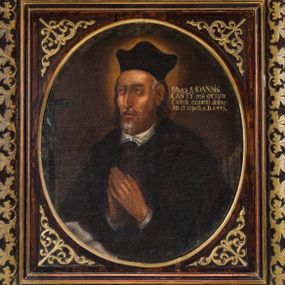
St. John Cantius
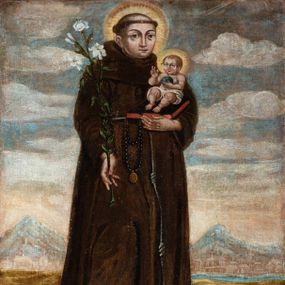
St. Anthony of Padua
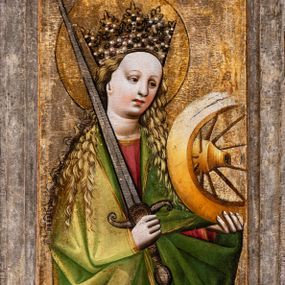
A front left wing of the old triptych of Our Lady of the Immaculate Conception
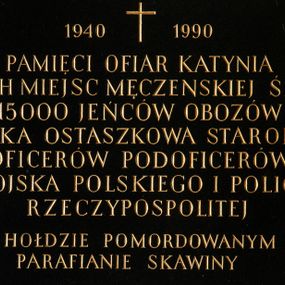
A plaque commemorating the victims of extermination
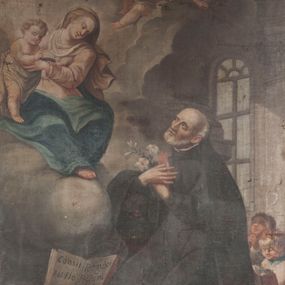
Adoration of Our Lady by St. Joseph Calasanz
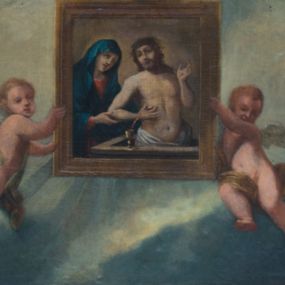
Adoration of painting "Misericordia Domini" by the Polish saints
How to cite?
Maria Działo, "St. Martin's Church in Podwilk", [in:] "The Sacred Lesser Poland Heritage", 2026, source: https://sdm.upjp2.edu.pl/en/works/st-martins-church-in-podwilk
